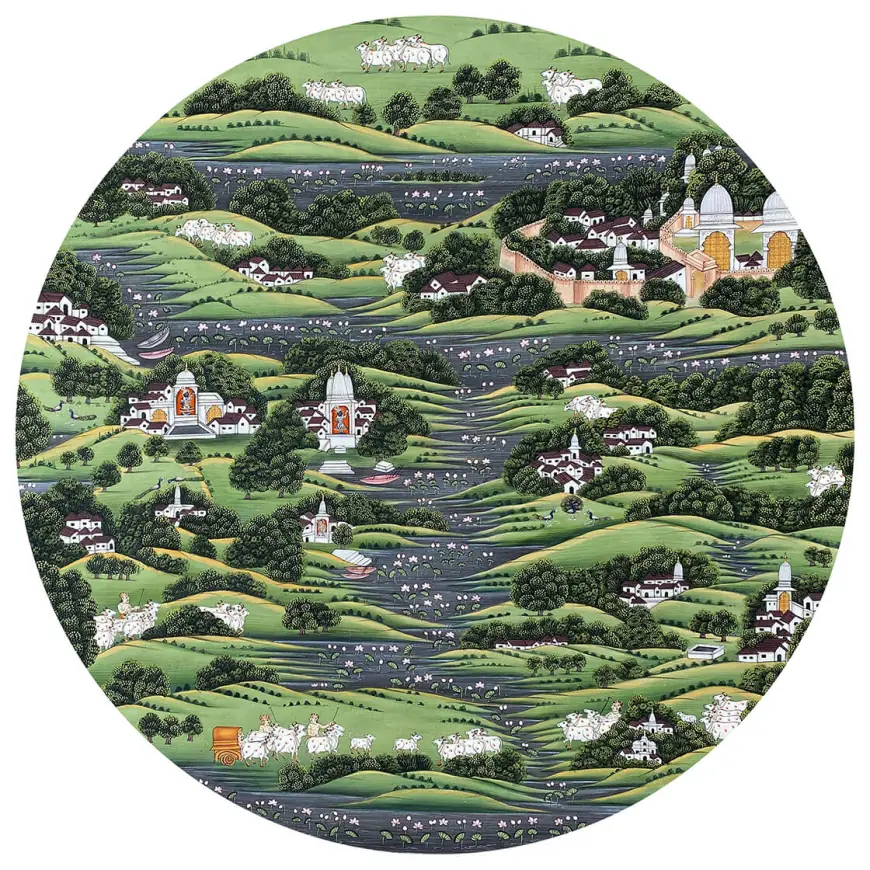Rediscovering Deccan Miniature Painting: India’s Forgotten Masterpiece
My first encounter with Deccan Miniature Painting was unexpected, but unforgettable. Unlike Mughal or Rajput styles, it had its own distinct voice—vivid reds, golds, and surreal figures that seemed to breathe life. Originating from the Deccan courts of Bijapur, Golconda, and Ahmadnagar, these works are bold, symbolic, and rich in emotion. Every brushstroke feels intentional, crafted with devotion and purpose. This same reverence is mirrored in Pichwai Art by Pooja Singhal, where tradition meets innovation. In a digital world, these intricate, handmade narratives remind us of the beauty and soul in India’s forgotten visual heritage.

First Encounter With Deccan Miniature Painting
A few months ago, I randomly ended up at a heritage art exhibition in Hyderabad. Honestly, I had gone just to kill time, but I found myself standing still in front of one painting for almost 10 minutes. Later, I learned it was a Deccan Miniature Painting. There was something about the colors — deep reds, gold, and emerald green — and the way the figures were drawn, almost surreal. It didn’t look like anything I’d seen before.
It’s Not Mughal, It’s Not Rajput — It’s Different
I’ve always heard about Mughal and Rajput miniature paintings, but Deccan Miniature Painting feels like a forgotten cousin with its own strong personality. The Deccan region (places like Bijapur, Golconda, and Ahmadnagar) developed this style in the 16th and 17th centuries. What I love is how it’s bold — the people in these paintings have huge eyes, twisted postures, and dreamlike settings.
Some even say that these artists weren’t just painting court scenes — they were telling stories you needed to feel, not just see. And that's something that really stayed with me.
Artists Had Patience… and Purpose
One thing you notice when you look closely at a Deccan Miniature Painting is how insanely detailed it is. Like, I’m talking about tiny flowers, gold detailing, and borders that look like they were made under a microscope. You can imagine how long it must have taken. It wasn’t quick work. These paintings were made with purpose, for kings, for rituals, for poetry.
And to think — this wasn’t mass-produced art. It was made by hand, by artists who probably never imagined that people in 2025 would still be talking about their work.
Where It Meets Today: Pichwai Art by Pooja Singhal
When I came across Pichwai Art by Pooja Singhal, it reminded me of the same commitment to detail and story. Though Pichwai and Deccan styles are different, the idea is similar — art made for devotion, full of symbolism and emotion. Pichwai Art by Pooja Singhal focuses on reimagining sacred art, and that kind of effort gives hope that traditional forms like Deccan Miniature Painting can live on too.
Why We Should Talk About Deccan Miniature Painting More
I honestly think Deccan Miniature Painting hasn’t gotten the love it deserves. It’s beautiful, complex, and deeply Indian. In a time when digital art is all around, going back to something handmade — and this meaningful — feels grounding.
If you’ve never seen a Deccan Miniature Painting in person, you really should. It’s not just a painting; it’s like someone whispered a 400-year-old secret onto paper.
What's Your Reaction?
 Like
0
Like
0
 Dislike
0
Dislike
0
 Love
0
Love
0
 Funny
0
Funny
0
 Angry
0
Angry
0
 Sad
0
Sad
0
 Wow
0
Wow
0
















































